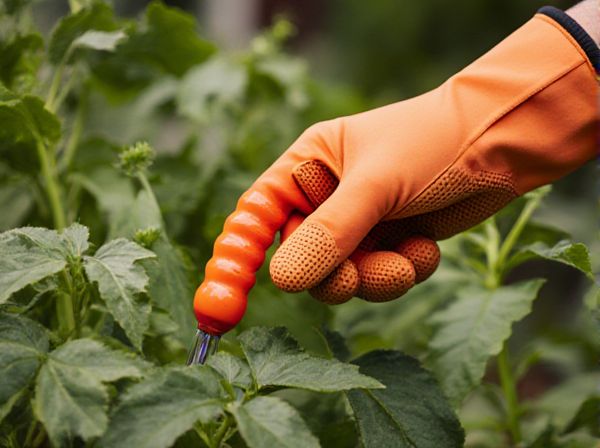
Suckers vs Runners Illustration
Suckers and runners are two distinct types of plant propagation methods that enable vegetative reproduction. Suckers emerge from the root system near the base of the parent plant, creating new shoots that develop into independent plants, while runners are horizontal stems that grow above the ground and produce new plants at nodes along their length. Both propagation strategies allow plants to spread efficiently, but suckers typically originate closer to the parent plant's root zone, whereas runners extend outward to colonize a wider area.
Table of Comparison
| Aspect | Suckers | Runners |
|---|---|---|
| Definition | New shoots emerging from the root system | Horizontal stems growing above or just below soil surface |
| Growth Direction | Vertically upward from roots | Horizontally spreading |
| Function | Create new shoots for plant propagation | Spread plant laterally for colonization |
| Example Plants | Fruit trees, raspberries | Strawberries, spider plants |
| Propagation Method | Used for clonal propagation via shoots | Used for vegetative propagation via stem extensions |
| Root Connection | Connected directly to main root system | Connected via stems, may root at nodes |
Understanding Suckers and Runners in Plant Propagation
Suckers and runners are specialized plant structures used in asexual propagation to create new plants. Suckers emerge from the root system or lower stem and grow vertically, often forming new shoots close to the parent plant, while runners, also called stolons, are horizontal stems that spread across the soil surface and form roots at nodes to develop independent plants. Understanding the growth patterns and origins of suckers and runners is essential for effective propagation, weed control, and garden management.
Key Differences Between Suckers and Runners
Suckers are shoots that arise from the root system of a plant, often growing vertically and independently from the main stem, while runners are horizontal stems that grow above ground, producing new plants at their nodes. Unlike suckers, which can drain resources from the parent plant, runners facilitate rapid colony expansion by spreading and rooting at intervals. Understanding these distinctions is essential for effective garden management and controlling plant spread.
Common Plants That Produce Suckers
Common plants that produce suckers include raspberries, blackberries, and raspberries, which send up new shoots from their root systems to form dense, clonal thickets. Fruit trees like apples and cherries often produce suckers at the base, which can divert nutrients from the main plant if not managed. Ornamental plants such as lilacs and sumacs also generate suckers, enabling rapid vegetative propagation and landscape coverage.
Popular Garden Plants With Runners
Popular garden plants with runners, such as strawberries, spider plants, and mint, propagate efficiently by sending out horizontal stems that root at nodes to form new plants. This mode of vegetative propagation allows rapid colony expansion and ground coverage, benefiting gardeners seeking low-maintenance, fast-spreading species. Unlike suckers that emerge from the root system, runners produce above-ground shoots, facilitating easier division and transplantation.
Advantages of Propagating with Suckers
Propagating with suckers offers advantages such as producing genetically identical plants that maintain the parent's desirable traits, ensuring consistent crop quality and yield. Suckers develop from the root system, providing strong root systems that enhance plant stability and nutrient uptake. This method often results in faster establishment and growth compared to runners, making it ideal for perennials and woody plants.
Benefits of Using Runners for Propagation
Runners provide an efficient method of propagation by producing genetically identical offspring rapidly, ensuring uniform plant traits and quality. Their ability to spread horizontally allows plants to colonize large areas quickly, reducing soil erosion and promoting ground cover. Utilizing runners also minimizes the need for labor-intensive propagation techniques, making them ideal for commercial agriculture and landscaping.
How to Identify Suckers and Runners in Your Garden
Suckers are vigorous shoots that grow from the base of a plant or its roots, often crowding the main stem, while runners are horizontal stems that grow above the ground and produce new plants at their nodes. To identify suckers in your garden, look for shoots emerging directly from the rootstock or below the graft union, typically found in roses or fruit trees. Runners can be spotted by their long, trailing stems spreading across the soil surface, common in strawberries and spider plants.
Step-by-Step Guide: Propagating Plants with Suckers
To propagate plants using suckers, start by identifying healthy suckers emerging from the base of the parent plant. Gently dig around the sucker's base, ensuring roots are intact, then carefully separate it from the main plant using a clean, sharp tool. Plant the sucker in a prepared pot or garden bed with well-draining soil, water thoroughly, and maintain consistent moisture until established.
Step-by-Step Guide: Propagating Plants with Runners
Propagating plants with runners involves selecting healthy, mature runners and carefully pegging them to moist soil while still attached to the parent plant to encourage root development. Once roots have established, typically within two to four weeks, the new plant can be severed from the parent runner and transplanted into a suitable growing medium. Maintaining consistent moisture and indirect sunlight during propagation enhances root formation and increases the success rate of runner-based propagation.
Choosing the Best Propagation Method for Your Plants
Suckers and runners offer distinct advantages for plant propagation, with suckers emerging from the base of a plant and runners extending horizontally from the parent. Selecting the best method depends on plant species, desired growth pattern, and ease of rooting; suckers are ideal for woody plants like raspberries, while runners suit ground covers such as strawberries. Understanding the propagation mechanism ensures higher success rates and healthy plant development.
Suckers vs Runners Infographic

 gardendif.com
gardendif.com